Spreefeld
The Housing Design Handbook: A guide to good practice 2nd edition
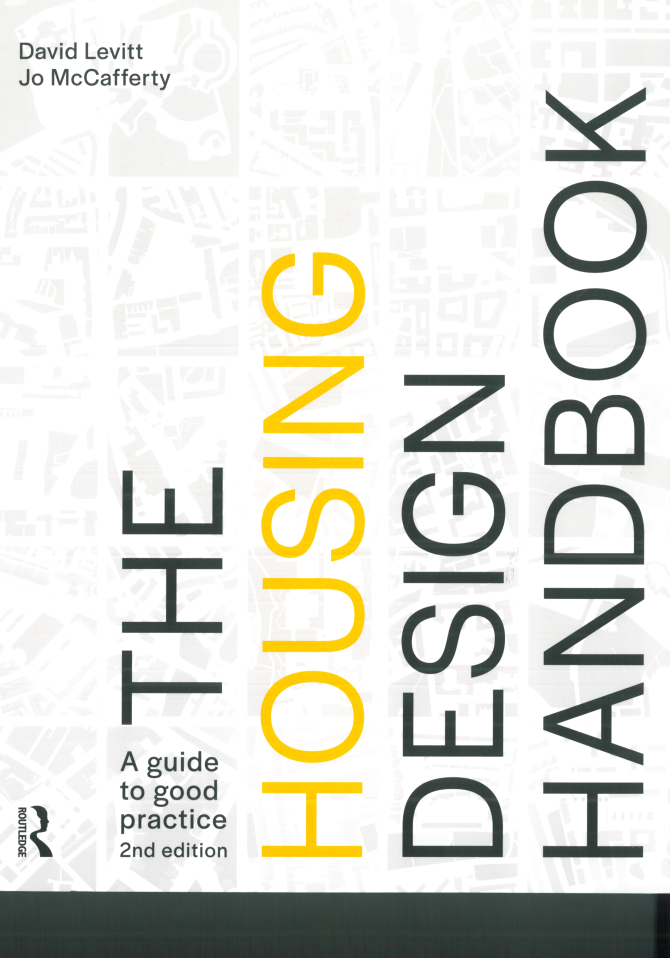
Levitt, David; McCafferty, Jo: The Housing Design Handbook A guide to good practice 2nd edition: Spreefeld. Routledge. 2019. page 304-307.

Urban Coding: From Closed to Lively Open Cities
Moravia Manifesto
“Wanting to plan urbanity is a contradiction in itself… The only thing possible is to offer spaces in which urban qualities can unfold.“ (Siebel 2015: 435).
Recent global sustainability agendas like the SDGs have, for the first time, clearly acknowledged that urbanisation is a key arena in which the battle against climate change and poverty, and for a more just and equitable global society is either won or lost. This is in recognition that urbanisation is unfolding to an extend and speed never experienced before, and without currently following pathways that present the perhaps gravest threats to social and environmental sustainability fuelling pollution and climate gas emission, and segmented and fractured societies. Transitioning towards sustainability therefore depends on, more than anything else, on a transformation of neighbourhoods and cities to become more inclusive and environmentally sound. Frequently, this ambition is referred to as “the great transformation”.

Köhl, Florian und Christian Burkhard, Philipp Misselwitz: From Closed to Open Cities. Moravia Manifesto. Ahlert, Moritz and Maximilian Becker, Albert Kreisel, Philipp Misselwitz, Nina Pawlicki, Tobias Schrammek (Hg.). Jovis. Berlin, 2018. page 78–87.

Spreefeld – Den öffentlichen Zugang zum Flussufer mithilfe einer Wohnbaugenossenschaft erhalten.
An Atlas of Commoning: Orte des Gemeinschaffens, ARCH+ 232
This drawing collage by Tamara Cartwright is based on fieldwork, secondary sources and materials from FATkoehl Architekten that have been redrawn, modified, and rearranged. The condensed, edited, and rearranged dialogs are based on interviews with stakeholders, and from secondary sources: 1. cohousing-berlin.de/en/projects, accessed June 1, 2018; 2. Based on site visit and conversation with Florian Köhl, October 16, 2017; 3. Isometric drawings based on material by FATkoehl Architekten.

Köhl, Florian und Silvia Carpaneto, Michael von Matuschka (BARarchitekten): Spreefeld – Den öffentlichen Zugang zum Flussufer mithilfe einer Wohnbaugenossenschaft erhalten. ARCH+ 232 An Atlas of Commoning: Orte des Gemeinschaffens (July 2018). page 62–69.

Prinzessinnengarten & Die Laube
An Atlas of Commoning: Orte des Gemeinschaffens, ARCH+ 232
This drawing collage by Paul Moscoso Riofrio is based on fieldwork and secondary sources that have been redrawn, modified, and rearranged. The condensed, edited, and rearranged dialogs are based on interviews with stakeholders, and from secondary sources: 1. prinzessinnengarten.net/about, accessed June 1, 2018; 2. nachbarschaftsakademie.org/en/about, accessed June 1, 2018; 3. prinzessinnengarten.net/die-laube, accessed June 1, 2018; 4. Based on site visit and conversation with Marco Clausen, October 16, 2017; 5. prinzessinnengarten.net/wir, accessed June 1, 2018.
Clausen, Marco und ARCH+: Prinzessinnengarten & Die Laube – Mit Hilfe eines Gemeinschaftsgartens Wissen und Teilhabe kultivieren. ARCH+ 232 (July 2018). page 92–96.

Zingster reloaded
The future of a prefabricated housing estate in Berlin – an interdisciplinary research project
30 years after the foundation stone of the “Zingster Strasse” housing development in Berlin Hohenschönhausen was laid, the “Zingster reloaded” study attempts to sustain-ably reload an isolated, mono-structural district on the spatial, natural and engineer-ing levels: The paradigm shift away from a functionally isolated, large-scale housing project through a more exact differentiation of spaces and programs, in order to create a “mixed-use” housing district, is now being expanded through a vision for local resource management for energy, water and nutrients. Decentralized concepts of energy technology and residential water management have become an integral part of urban planning development and left their impact on public as well as private spaces. This shift allows an attractive sphere to develop that promotes a diversified coexistence of living, working and leisure areas within walking distance and, hence, the transformation from a “bedroom community” into a “mixed-use” neighborhood.
Zingster Strasse shows: the aim should not be a pragmatic City of consensus but a programmatically and spatially demanding, affordable community geared toward the future for all inhabitants.
The concrete approach for Zingster Strasse considers urban space to be a dynamic system that brings together natural spatial functions (local water resources), circulatory resource preservation (waste disposal, water management, and energy recycling) along with social infrastructure (living, working and leisure). A strategy of sustainable urban design focuses on small-scale units within a large-scale urban structure. The transformation of buildings and free spaces provides for a revaluation of accommodations and abodes, as well as the creation of production units, agricultural areas and trading centers for urban resource management. Citizens become prosumers of energy, fertilizer and nutrition from their own gardening in a decentralized urban network, an important extension of urban design of the 21st century. On account of the housing stock, the transformation must necessarily be gradual, observing available areas and buildings.

King, Luise und Jürgen Weidinger, Matthias Barjenbruch, Markus Naimer, Florian Köhl: Zingster reloaded. Zur Zukunft einer Plattenhaussiedlung in Berlin. Berlin: Universitätsverlag der TU Berlin. 2015. page 85-103.

Genossenschaft Spreefeld Berlin
German Architectural Annual 2015 / 16

Kristien Ring. Wohngenossenschaft Spreefeld Berlin. Deutsches Architektur Jahrbuch. 2015/16. page 56-61.

Spreefeld, Berlin
Building an Living in Communities
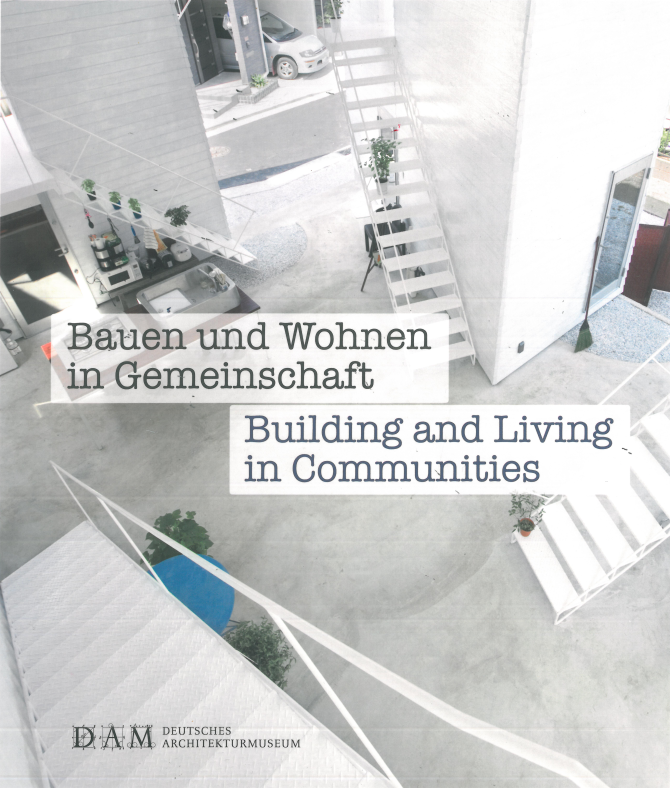
Becker, Annette und Peter Cachola Schmal, Laura Kienbaum, Kristien Ring (Hg.): Bauen und Wohnen in Gemeinschaft. Ideen, Prozesse, Architektur. Basel: Birkhäuser. 2015. page 17–22, 170–175.

Urban Living
Strategies for the future
Cities such as Berlin are faced with new architectural and urban planning challenges, not only on account of their constant growth, but also because of changing ways of life. Urban Living seeks to discuss future forms of urban living and to consider their design and social influences. How can residential building strengthen urban structures and provide new opportunities through densification? How can monostructures be broken up and open spaces be upgraded? And how can architecture meet the requirements of new forms of cohabitation, either owing to a broader social mix or to the combination of living and working? This book presents convincing concepts which show that affordable residential space can also have a high structural quality. Exemplary designs and solutions from the international Urban Living Workshop, which more than thirty international architecture offices took part in, provide excellent examples of the potential qualities of future residential construction.
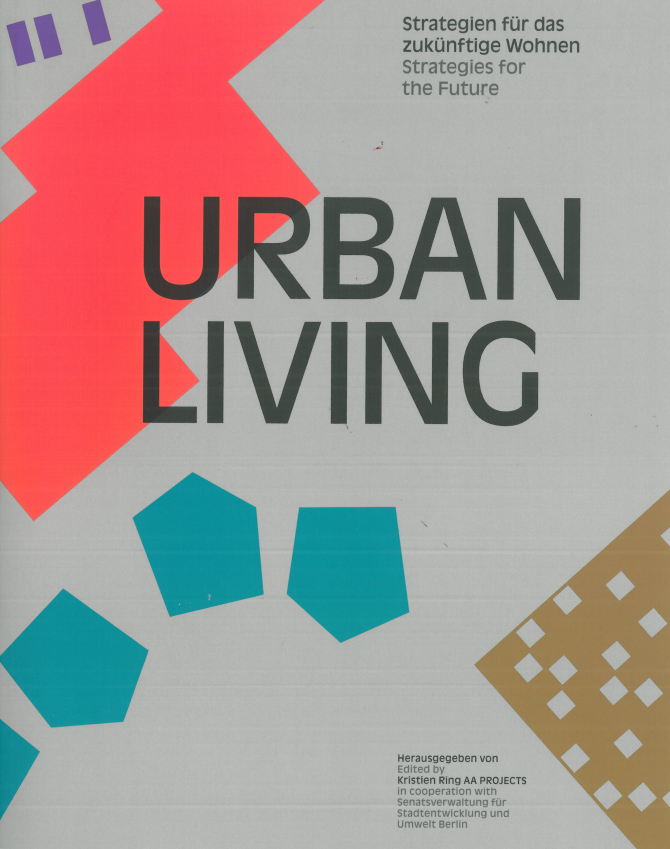
Ring, Kristien und Senatsverwaltung für Stadtentwicklung und Umwelt, Berlin (Hg.): Urban Living. Jovis. Berlin, 2015. page 72–73, 156–157.

Genossenschaft Spreefeld in Berlin
New Cooperatives, Bauwelt 39.2014
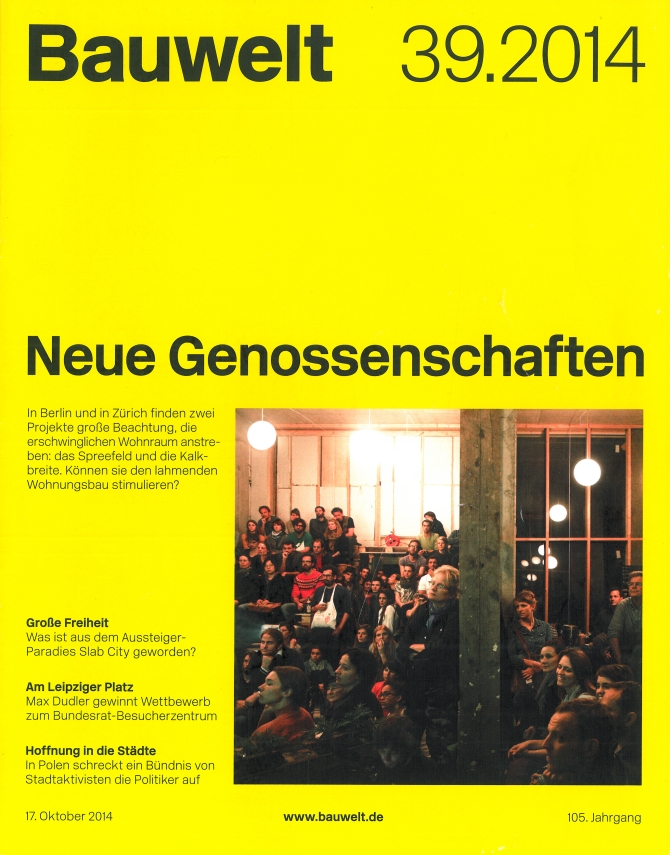
Nils Ballhausen, Doris Kleilein: Bauwelt 39.2014 Neue Genossenschaften. Genossenschaft Spreefeld in Berlin. page 14-23.

STADTLABOR BERLIN
30 Jahre Wohnbund, 10 Jahre EXPERIMENT DAYS, DIY-IBA
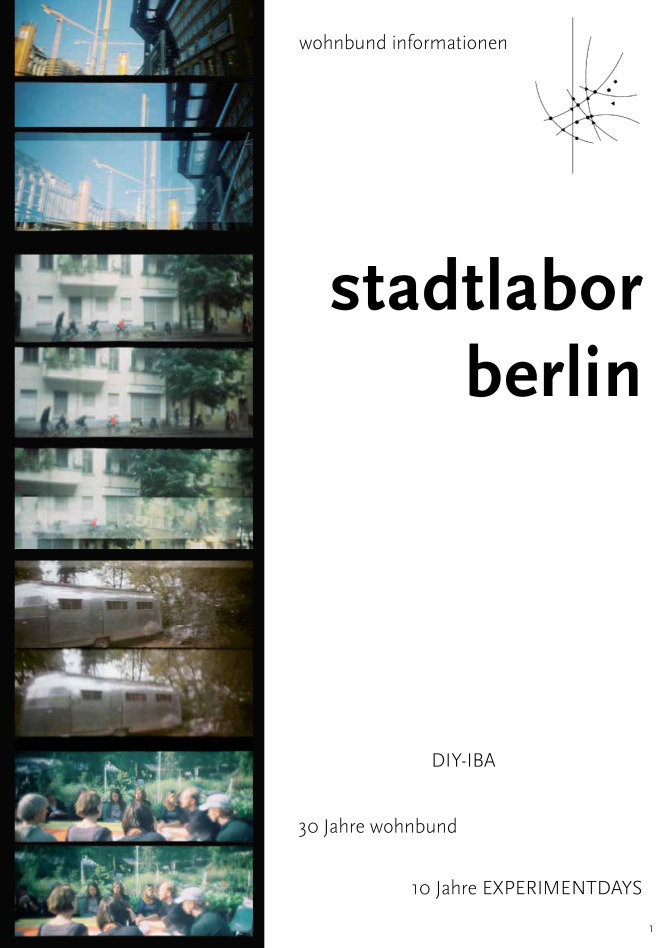
Eidner, Franziska und Ring, Kristien: Von der Nische zum Mainstream? Qualitäten und Potentiale einer Selfmade City. stadtlabor berlin. wohnbund eV. München, 2014. page 12-13, 30.

Bausatz Stadt
Een Nieuw Perspectief, Stadt Bauwelt 201 / 12.14
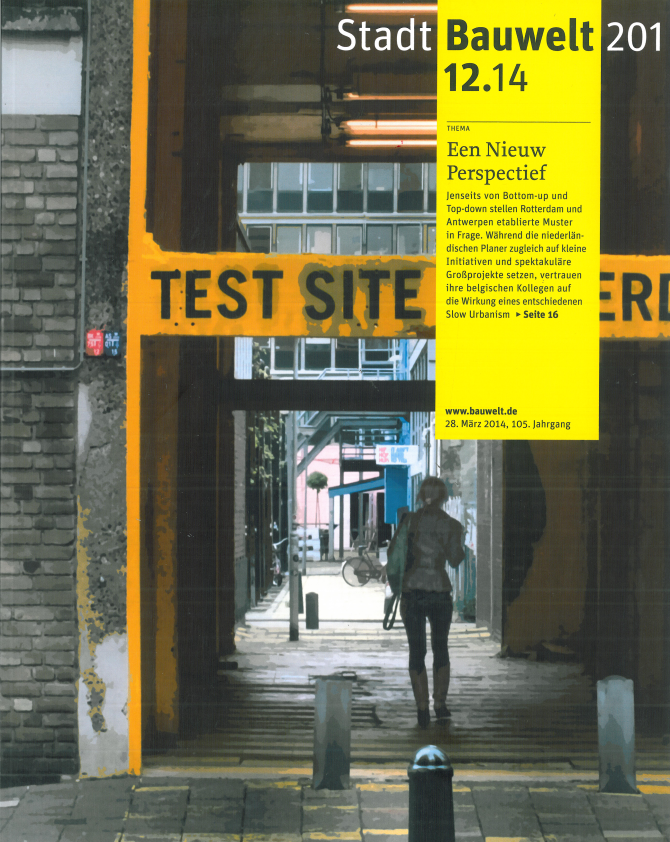
Köhl, Florian: Bausatz Stadt. Stadt Bauwelt 201 12.2014. Een Nieuw Perspectief. page 64–67.

Die Reste der IBA, Urban Living – neue Formen des städtischen Wohnens in Berlin
Ein Schloss! Ein Schloss? Bauwelt 11.14
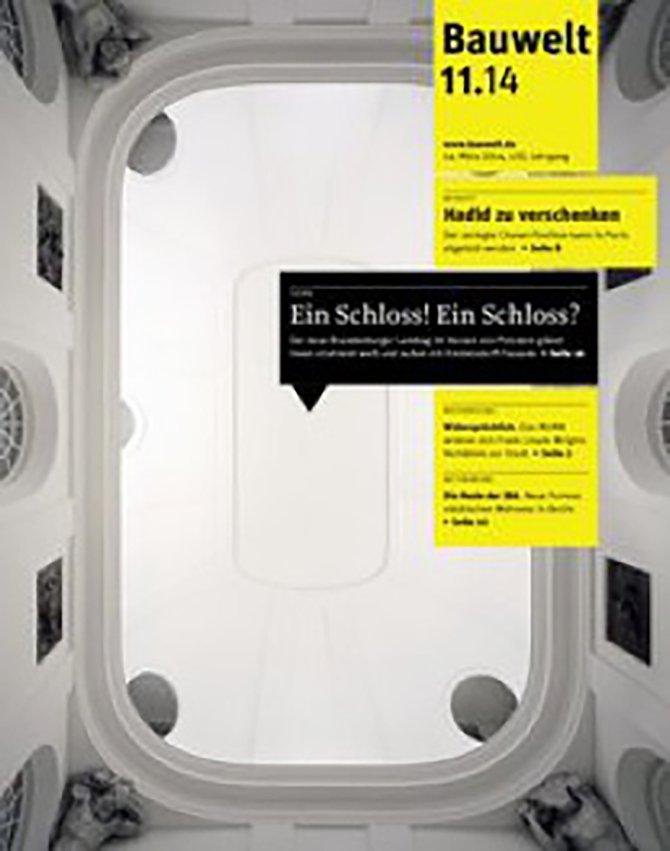
Doris Kleilein: Bauwelt 11.14. Ein Schloss! Ein Schloss? Die Reste der IBA | Urban Living – neue Formen des städtischen Wohnens in Berlin. page 10-15.

SELF MADE CITY
Self-initiated Urban Living and Architectural Interventions
Berlin is thought of as the city of Urban Pioniers, a place where everything is possible and where space can be taken over and transformed in self-initiative. Voids and unused spaces are occupied, old buildings engaged with new program. The self-determined design of space, building, living and working, be it in the form of builder collectives or co-housing, co-op’s, co-working spaces, or other project forms, has produced an architectural diversity and quality in Berlin over the last fifteen years that is exemplary. SELFMADE CITY presents the evolving condition in Berlin, including a survey of over 120 projects, an analysis of the qualities and potentials of these projects as well as 50 best-practice case studies. Which contributions are being made in private initiative for the development of the city and what can be achieved in the future? Which methods and strategies are generating added value?
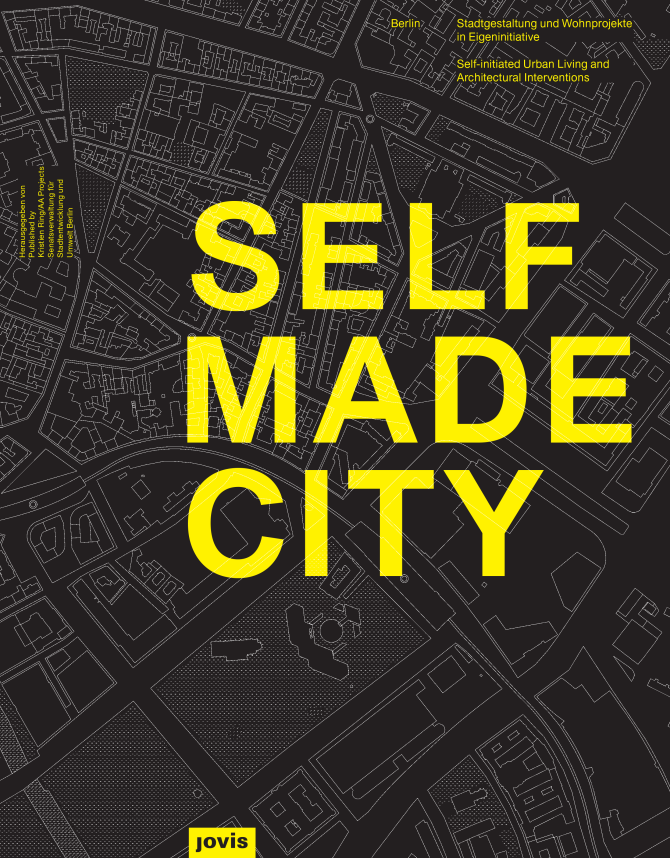
Ring, Kristien und AA Projects, Senatsverwaltung für Stadtentwicklung und Umwelt Berlin (Hg.): Selfmade City – Berlin. Stadtgestaltung und Wohnprojekte in Eigeninitiative. Jovis. Berlin, 2013. page 50–55.

Signature Collective
Tracés 01 / 139° année / 16 janvier 2013
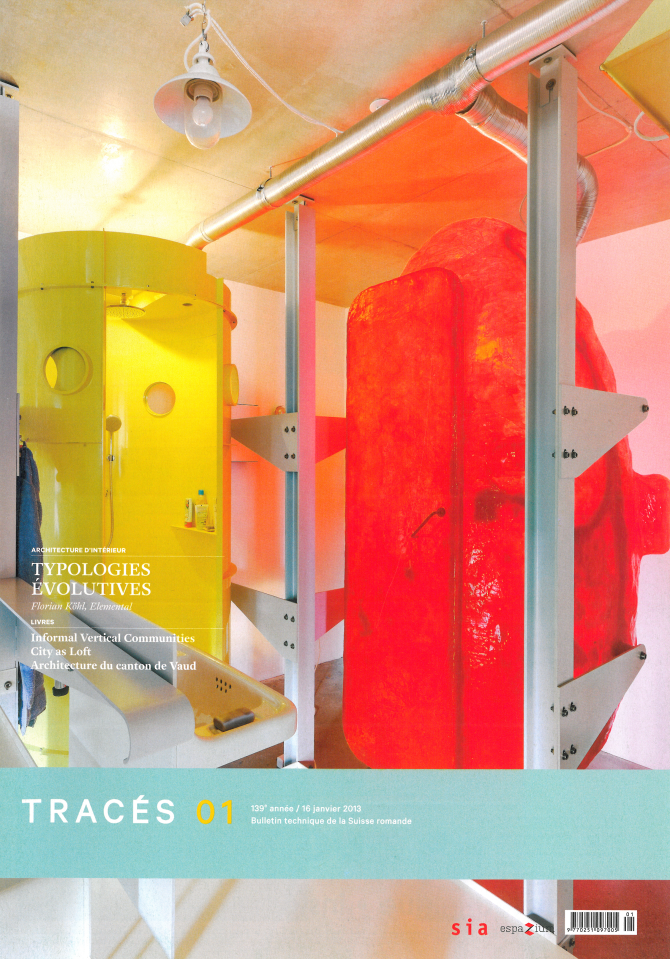
Köhl, Florian: Signature Collective. Tracés 01 / 139° année / 16 janvier 2013. page 7-14.

Building cooperatives – shared authorship
Berlin, Arch+ 201/202
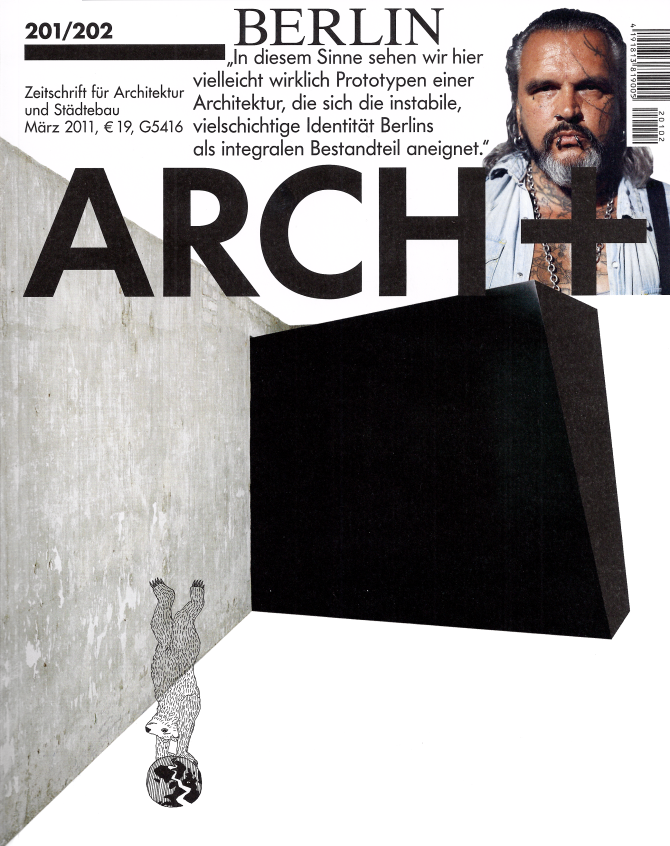
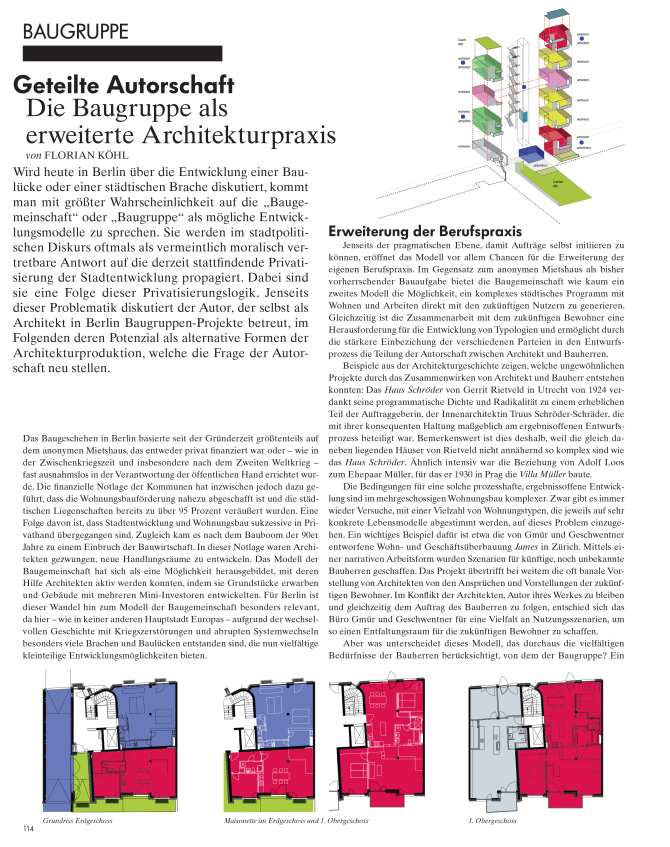
Köhl, Florian: Baugruppen – Geteilte Autorschaft. ARCH+ 201/202. Berlin, November 2011. page 114–117.

Die Bodenfrage
Berlin, Arch+ 201/202

von Rosen, Nikolai und BARarchitekten, brandlhuber+, fatkoehl, Kaden Klingbeil, ludloff + ludloff, deadline, ebers architekten: Die Bodenfrage. ARCH+ 201/202. November 2011. page 100–105.

Housing on Spree river in Berlin, Germany
466 l’industria delle costruzioni

Bochicchio, Leila: Housing on Spree river in Berlin, Germany. 466 l’industria delle costruzioni. December 2010. page 68-75.

Der Ausverkauf der Stadt
Stadtreserven, Bauwelt 4.11
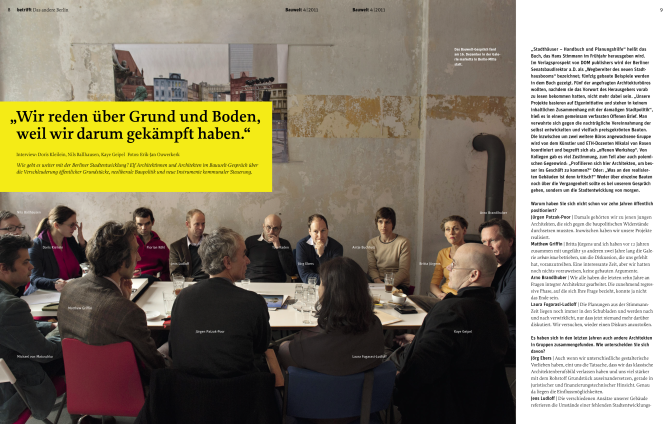
Interview: Doris Kleilein, Nils Ballhausen, Kaye Geipel. Fotos: Erik-Jan Ouwerkerk. Der Ausverkauf der Stadt. Interview mit BAR Architekten, Berlin; Brandlhuber + ERA, Emde, Schneider, Berlin; Ebers Architekten, Berlin; FAT Koehl, Berlin; Kaden + Klingbeil , Berlin; deadline, Berlin; Ludloff + Ludloff, Berlin. Bauwelt 4.11 Stadtreserven. page 8-13.

Portrait n°1, House n°4, 7 Simultaneous shooting cameras
DEAD ON ARRIVAL / drawings, objects, inhabitation, landscape, cities, atmosphere
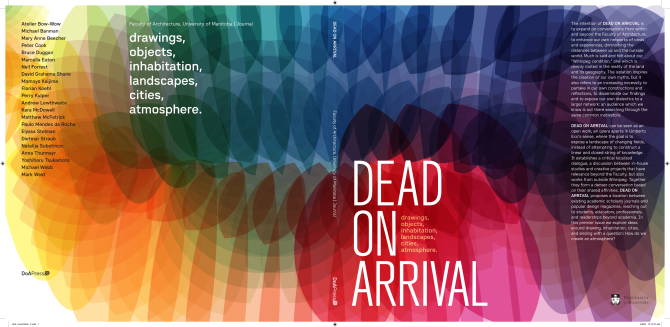
Florian Koehl: Portrait n°1, House n°4, 7 Simultaneous shooting cameras. DEAD ON ARRIVAL / drawings, objects, inhabitation, landscape, cities, atmosphere, Faculty of Architecture, University of Manitoba | Journal 2009. page 99-107.

Let´s build a house
der Freitag / Nr.19 / 7. Mai 2009
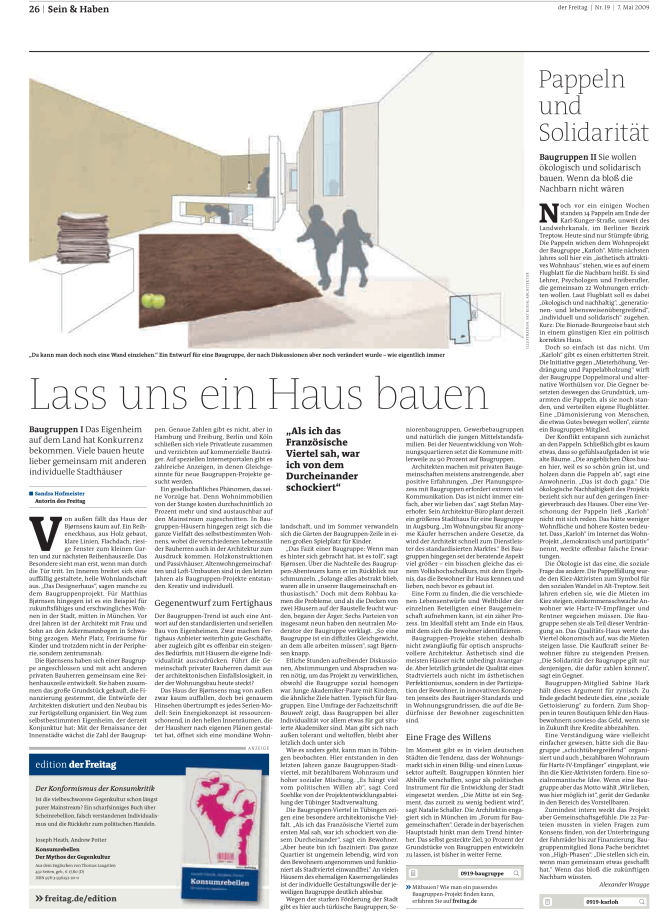
Sandra Hofmeister: Lass uns ein Haus bauen. der Freitag | Nr.19 | 7. Mai 2009. page 26.

Vom Schussfeld zum Bauland
Das Modell Baugruppe, Bauwelt 39-40 / 2008
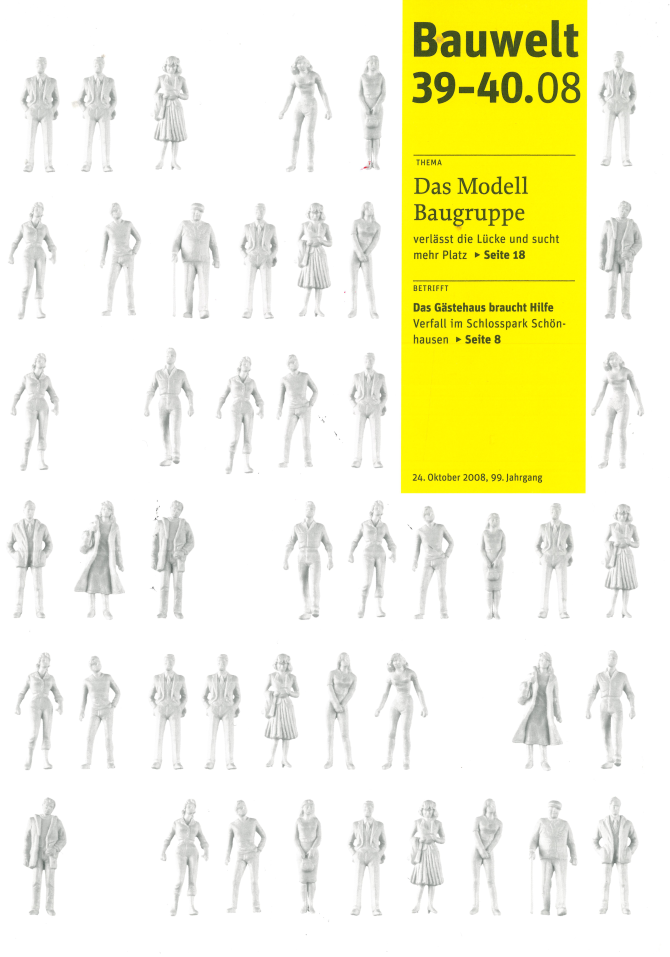
Nils Ballhausen: Vom Schussfeld zum Bauland. Bauwelt 39-40.2008. 24.10.2008. Das Modell Baugruppe. page 28-33.

A coincidence caused by a peephole
Shift City

Köhl, Florian: A coincidence caused by a peephole. Umschalt Stadt / Shift City vom 2005: Hrsg. Florian Köhl / Robert Slinger. page 29-40.